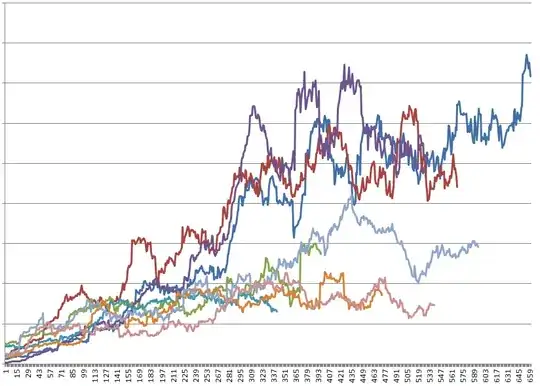I have been counting stomata on fossil leaf material to apply a known relationship between stomatal index and CO2. I thought that the material was all from one population (one species at a given site). However, exploration of the data suggests there may be two populations. I interpret these to be the species I was targeting and a hybrid, which are difficult to distinguish by leaf morphology (For reasons of stratigraphy we can rule out that these were actually two different times and thus different 'real' CO2 values).
I have been able to find information on how to determine if two samples are from different populations, but not if you took one sample and seem to have two different populations. Would it be acceptable to divide the distribution (say split it at 6.5) and use a Wilcoxon-Mann-Whitney test to determine if two samples are significantly different?
What is an unbias way to determine if these really are two populations?
These are the stomatal index results for the 41 leaves.
[1] 5.172414 5.246914 5.276382 5.278592 5.288462 5.306122 5.323194 5.325444 5.357143 5.366726 [11] 5.367232 5.376344 5.384615 5.504587 6.053269 6.854839 6.910569 7.006369 7.036247 7.112069 [21] 7.156673 7.231920 7.311828 7.416268 7.440476 7.448494 7.491857 7.526882 7.526882 7.534247 [31] 7.547170 7.559395 7.605634 7.671233 7.749077 7.925408 7.964602 8.064520 8.247423 8.252427 [41] 8.436214
